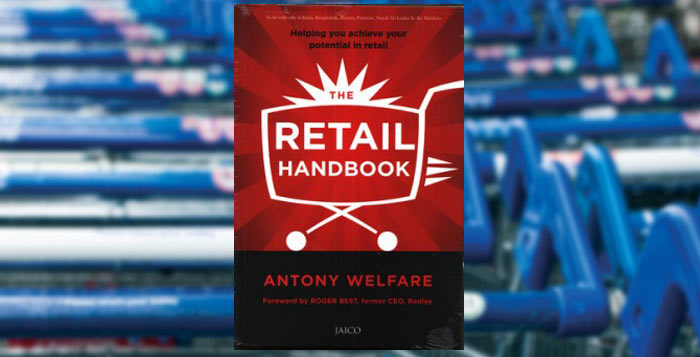I had to get up every day with my mind set on improving something, Sam Walton, the founder of Walmart said. Roger Best, the former Radley boss, recalls this in his foreword to The Retail Handbook, which he recommends to independent retailers, saying it offers them the opportunity to exploit thinking and techniques that are the preserve of the big retail chains.
Author Antony Welfare started out working for newsagent Sam Sellers as a 15-year-old. In two years, Sellers trained him in all areas of running a shop. Welfare then worked for Sainsbury’s to pay his way through a retail management degree. He joined the supermarket on its graduate scheme and next moved to roles with M&S and Dixons Retail before leaving to join a start-up selling shirts.
[pull_quote_right]Before you have a product to sell, or a shop to sell it from, you need to know your customer[/pull_quote_right]
This background is important as it accounts for both the book’s strengths and its few weaknesses. The latter include suggestions such as “gather your team together and spend at least one day brainstorming what the brand means”, which is outside the normal experience of most independents.
Better advice looks like: “Go out and research the market – walk around your high street or shopping centre. How do customers see your product in the market and where do they purchase from now?”
The most brilliant thing about Welfare’s book is its internal organisation. Unlike most other guides to retailing I have seen, it starts with a chapter on the customer. Before you have a product to sell, or a shop to sell it from, you need to know your customer. “It takes time and effort but is worth every second of your and your team’s time,” writes Welfare.
You need to know the lifetime value of your customer. For example, a “customer will on average buy a case of wine every three to four months”.
That means an average customer will buy 48 bottles in a year. At £7 a bottle that is a potential £336 of sales and, with a margin of 35%, a potential £117 gross margin. When you first meet the customer you should view them as a long-term customer with a margin value of £117 a year.
Welfare explains how you can keep the customer loyal with promotions, and shows how to calculate how much to offer. Gather data, he suggests, and write down what you know about your customers. Build an image of who they are. This will help you to build a business as it will help you understand what product to sell.
Importantly, he says the products that you sell should reflect your “values and interests”. This will make running your shop more fun and inspire your team. Next, you need to do the sums and work out the gross margin you can achieve.
The Retail Handbook takes you on a journey to business success through chapters on developing staff, customer service and buying. In my experience, too many retailers build businesses on the assumptions made by their previous owner. This book will help you to think your way out of dead ends and into profitable new sales.
It is packed with useful lists. Even great retailers will find it helpful to consider how their processes work. As a bonus, at the end Welfare introduces the world of ‘e-tailing’ – the new frontier for convenience stores.
Essential summer reading.





Comments
This article doesn't have any comments yet, be the first!